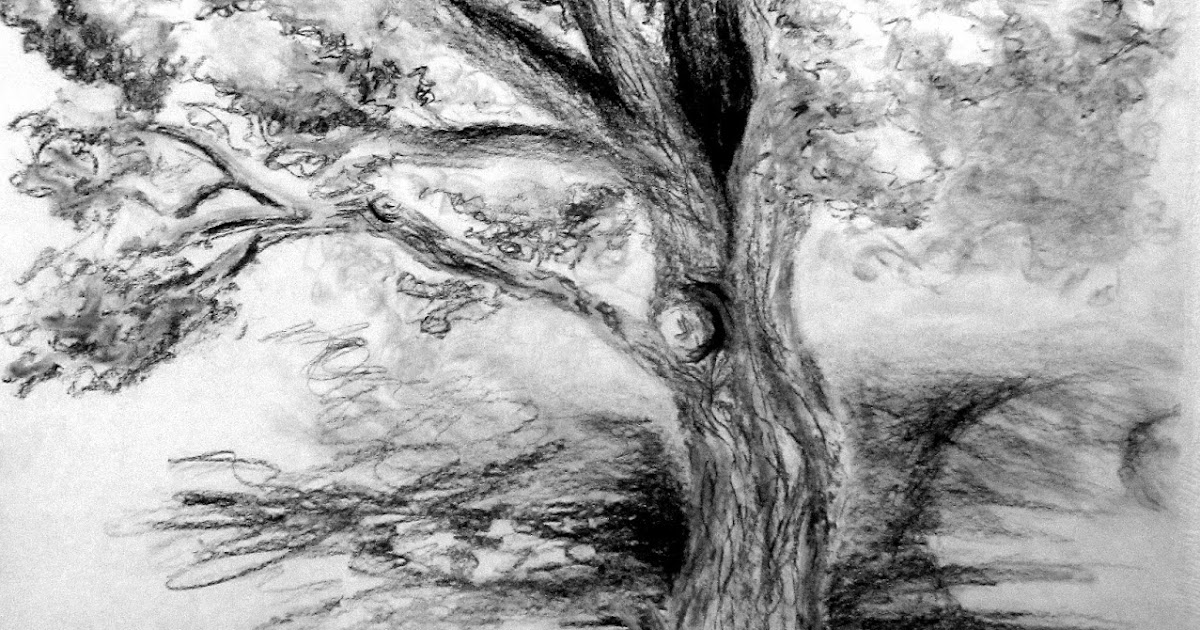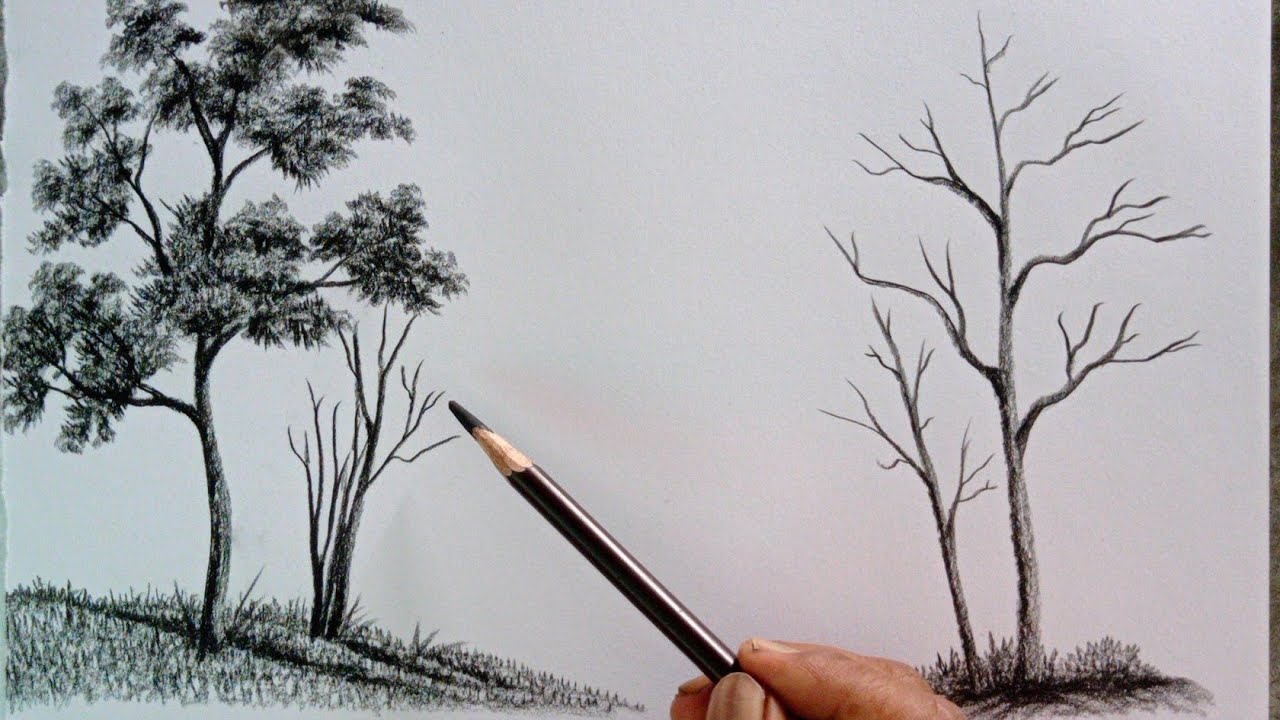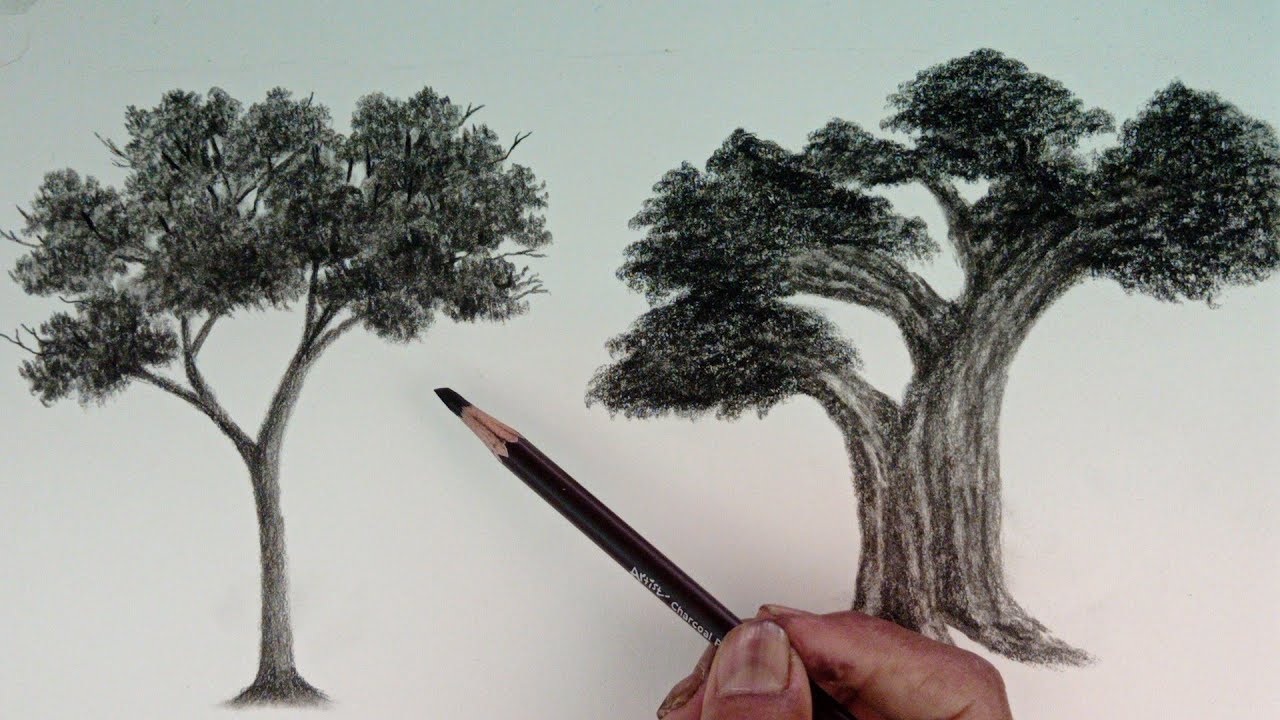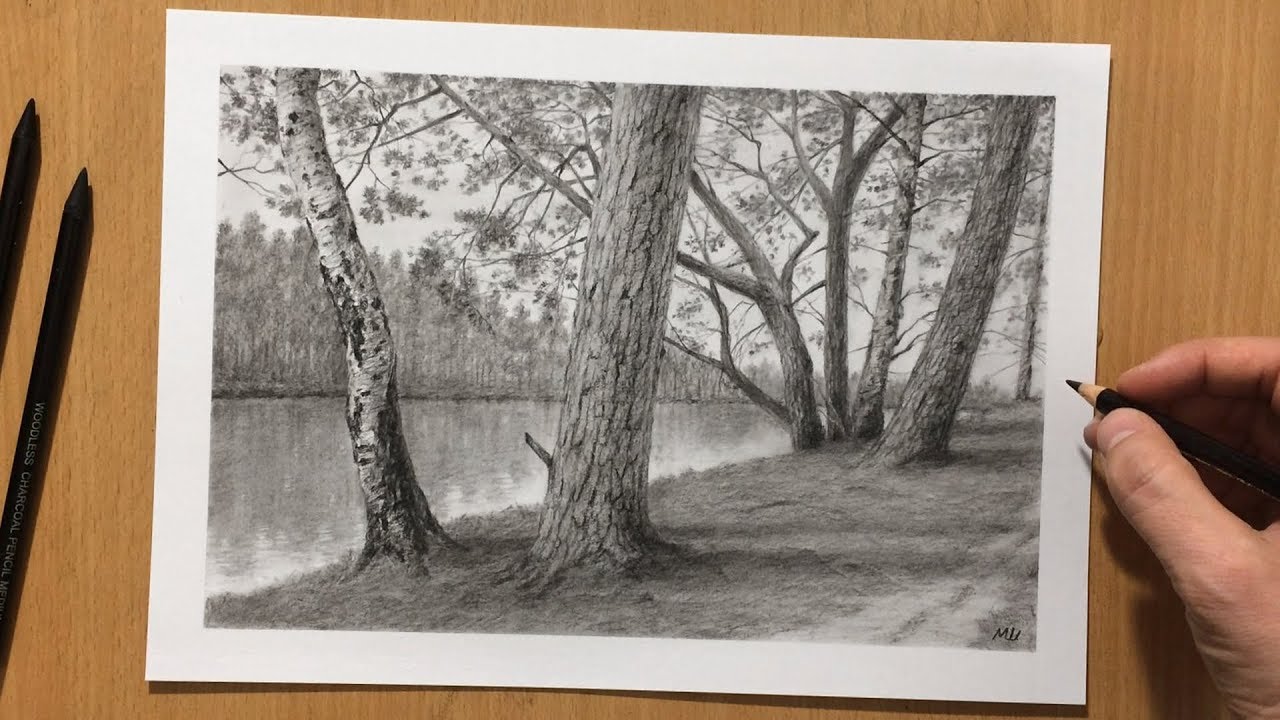Crafting a charcoal drawing of a tree can be a meditative and rewarding artistic endeavor that captures the essence and beauty of nature. Whether you are a beginner or an experienced artist looking to sharpen your skills, mastering charcoal tree drawing requires understanding fundamental techniques and applying practical tips to bring your tree sketches to life. In this article, we’ll explore the steps and methods that can help you create evocative and realistic charcoal drawings of trees, enhancing your artistic repertoire.
Laying the Groundwork
Choosing Your Materials
To start your journey into charcoal tree drawing, you need to select the right materials. Opt for a variety of charcoal sticks, pencils, and vines that offer different levels of hardness for versatile mark-making. Include kneaded erasers and blending tools like stumps or paper towels in your toolkit. High-quality, heavy-weight paper that can handle charcoal without excessive smudging is essential. Investing in good-quality supplies will ensure that your drawings have depth, contrast, and clarity.
Setting the Scene with a Basic Sketch
Begin your drawing by lightly sketching the general outline of your tree. Use loose and light strokes to define the shape and proportions of the trunk, branches, and foliage, without focusing on details. This initial sketch serves as a guide and helps you map out the composition of your drawing. Keep your movements relaxed, and don’t worry about making mistakes—charcoal is forgiving, and errors can be easily corrected or incorporated into the drawing.

Shaping the Silhouette
Rendering the Tree Trunk and Branches
With the basic sketch in place, start refining the trunk and branches of your tree. Use the side of a medium or soft charcoal stick to create broad strokes that evoke the texture of the bark. Apply pressure variably to depict the curvature and solidity of the tree trunk. As you work on the branches, taper your lines to suggest their narrowing shape. Remember, the branches are not just lines but have volume; so build them up with layers of charcoal to create dimension.
Crafting the Foliage with Bold Techniques
Foliage can be challenging but is pivotal in bringing your charcoal tree to life. Instead of drawing individual leaves, which can be time-consuming and look unnatural, focus on the mass and form of the foliage. Use a charcoal vine or a soft pencil to block in the darker areas where the leaves are denser. Employ a tapping or dabbing motion with your charcoal to create leaf clusters. Pay attention to light and shadow, leaving spaces where the sky or light would filter through.

Exploring Light, Shadow, and Texture
The Interplay of Light and Dark
Mastering the balance of light and shadow is crucial in charcoal drawing. Identify the direction from which light is falling on your tree, and use it to guide your application of highlights and shadows. Use an eraser to lift charcoal for lighter areas and add layers of charcoal for shadows to create depth. This contrast not only suggests the form of the tree but also contributes to the overall mood of your drawing.
Imbuing Texture for Realism
Texture in a charcoal drawing can bring a drawing from good to great. Use different strokes to recreate the feel of the bark and leaves. Short, quick strokes work well for rough bark, while smoother, lighter strokes can represent smoother bark or distant foliage. Experiment with cross-hatching, stippling, or even erasing through a layer of charcoal to achieve varied textures that replicate nature’s diversity.

Finishing Touches and Preservation
Revisiting Details and Contrast
As your drawing nears completion, step back to assess and adjust the details that will bring balance and harmony to your piece. Enhance the contrast in certain sections if needed, refine the sharpness of branches, or add more shading to the foliage to convey fullness. It’s often the subtle details that can make your tree drawing stand out, so take your time to review and perfect these elements.
Preserving Your Charcoal Drawing
Once you are satisfied with your drawing, it’s important to preserve your work. Charcoal is prone to smudging, so use a fixative spray to set your drawing. Ensure you spray lightly and evenly in a well-ventilated area to avoid altering the textures and values you’ve carefully built up. Once dried, your charcoal tree drawing will be safeguarded against smears and ready for display.

Fine-Tuning Your Vision
Emphasizing Depth and Perspective
For your drawing to pop, it’s essential to convey a sense of depth. Achieve this by differentiating the tones of foreground and background elements. Apply more pressure and darker shades to the portions of the tree closest to the viewer, such as the trunks and primary branches, while using lighter strokes to suggest distant limbs and subtler foliage. Also, overlap branches and vary their size and clarity based on their position in space, which naturally introduces perspective into your drawing.
Refining the Composition
Look at the overall composition of your piece. Your tree should sit harmoniously within the frame, with all elements supporting the main subject. Consider whether the surrounding space needs work—is it balanced, or does it draw attention away from your tree? Add suggestive details like shadows cast on the ground or hints of the environment to anchor your tree within its setting. At times, less is more; avoid overworking the background to ensure your tree remains the focal point.

The Artistic Journey Continues
Evaluating and Learning from Your Work
After the charcoal settles and your drawing is complete, take time to reflect on the process. What techniques worked well for you? Which areas presented challenges? Each drawing is a learning experience, so review your work critically but constructively. Keep a portfolio of your charcoal trees, observing your progress over time. Don’t be afraid to revisit old drawings with new insights—you might find ways to enhance them further or gain inspiration for future works.
Drawing with charcoal allows for rich, nuanced work brimming with vitality and emotion. Trees, with their complex forms and textures, make for excellent subjects to develop your charcoal drawing skills. Through practice, experimentation, and adherence to the outlined techniques, you will refine your ability to create striking charcoal tree drawings. Embrace the unique qualities of the medium and let your creativity guide you as you master the art of charcoal tree drawing.